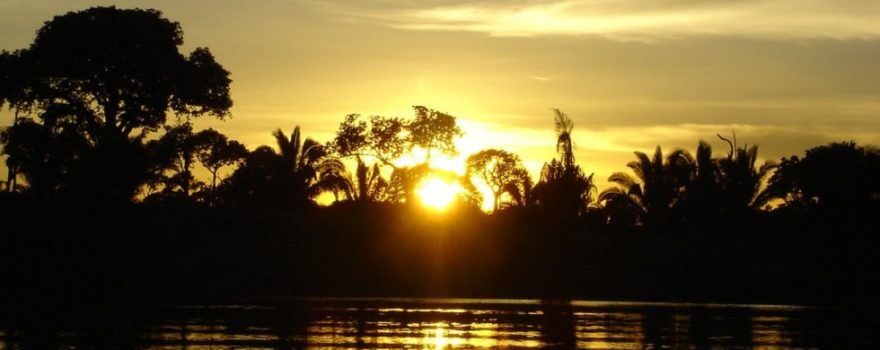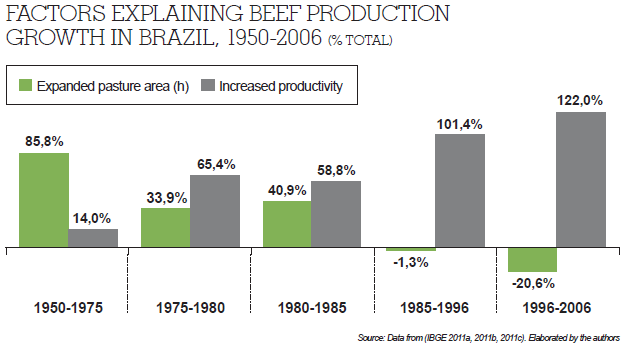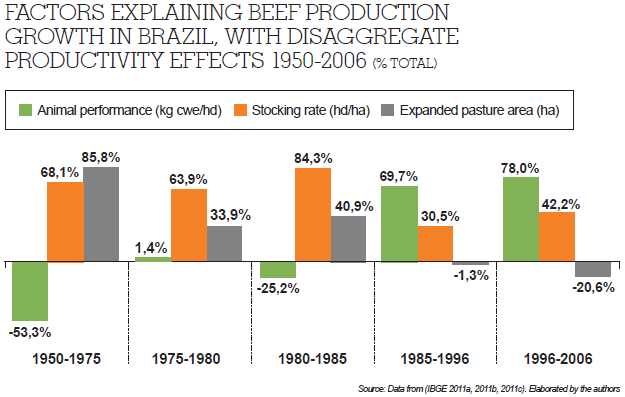
Usually associated with positive themes like soccer and samba, in 2019, several negative facts related with Brazil reverberated globally. Amazon wildfires, for example, have made headlines in international news, and the hashtag #PrayforAmazonas ranks first on Twitter’s worldwide trending topics.
The British newspaper “The Guardian”, the website of US magazine “National Geographic”, the CBS television network, and several German newspapers like the “Deutsche Welle”, echoed the incident. Among many others. The world reported, discussed, and demanded answers from Brazil.
In one of its stories, the American newspaper “The New York Times” also pointed to farmers as the great devastators of forests in northern Brazil and, thus, mainly the ones to blame for the burnings.
“The world today is under the impression that the Brazilian government and the agricultural sector are promoting deforestation; which is untrue,” says Roberto Betancourt, director of the Agribusiness Department of the Federation of Industries of the State of São Paulo (FIESP).
Roberto Betancourt is one of the leaders of the Brazilian agricultural sector, having made presentations at the Food and Agriculture Organization (FAO), in Rome, Italy, about environment preservation and agricultural production challenges, highlighting the Brazilian efforts in this area.
According to the executive, consumers are clearly concerned about the subject. Thus, Brazil needs to improve communication on the advancement and strengths of the green and yellow agribusiness. This is one of the main purposes of this article. We will present reliable data further down.
Before we do, however, we need to differentiate the characters and “separate the chaff from the wheat.” For a better understanding, we introduce the Brazil Climate, Forests and Agriculture Coalition, a multisectoral movement aimed at proposing actions and influencing public policies and thus help Brazil to position itself as a global player in a new, more prosperous, fairer and sustainable development model capable of generating employment and income.
The initiative, made up of environmentalists and agribusiness supporters, began in December 2014, with the purpose of discussing the guidelines Brazil would take to COP21 Paris, the United Nations Conference on Climate Change. “And since then, we have been moving forward and today we have a coalition with more than 200 members,” says Luiz Cornacchioni, executive director of the Brazilian Agribusiness Association (ABAG).
“We seek convergence through a path that presupposes dialogue. And not polarization,” adds André Guimarães, executive director of the Amazon Environmental Research Institute (IPAM). The two agronomists are currently the leaders of the movement.
One of the main concerns of the coalition members today is the escalation of deforestation and illegal activities in the Amazon region. Therefore, the agribusiness sector and environmentalists came together for the campaign “Be Cool with the Amazon.”
The subject deserves full attention, because the public areas of the Amazon rainforest – about 60% – have been targeted by land grabbers and criminal organizations that invade, deforest, and falsify documents to sell these lands and profit from it.
The campaign demands measures to combat these crimes. In addition to maintaining the country’s current protected areas and requiring a stronger presence of the Federal Police to combat public land theft, another demand is the creation of a task force to promote conservation and sustainable use of forests intended for public use in areas not yet demarcated. The Amazon region has 287.6 million hectares of public forests, 24% under this category.
As André Guimarães points out, preserving the Amazon is a good business for Brazil in every respect. “It guarantees rainfall, an international reputation, and places us in a higher development level, in addition to preserving the biodiversity, which may be the business of the future for the country.”
Therefore, it is in the interest of agribusiness to maintain the forest and combat irregular deforestation and burning. Thus, it is essential to clarify: “Those who are grabbing land, stealing public property and timber, and invading a protected area are not the farmers. It´s the criminals. This is the first line to be drawn,” says Cornacchioni.
A farmer is a worker who owns his property, takes out bank loans, cultivates the soil, plants the pasture and takes care of his animals. He may even engage in some illegal conduct, such as clearing more land than what is allowed or authorized, but he is not a criminal. That needs to be clear.
“The farmer acts in accordance with the law, has responsibilities and is interested in producing for the country. Those on the other side are outlaws”, summarizes the diretor of ABAG. He goes on: “With all the excitement generated in regard to the Amazon, people have mixed up these players. Much of the criticism directed at Brazil – mostly unfair – has associated the farmer with the land thief.”
With this clear understanding, we can now deal with the real Brazilian agribusiness: a largescale production sector that preserves the environment and maintains a well-balanced relationship between preserved areas and areas destined for production, with a penchant for conservation.
“Statements like this used to be an exception until recently,” admits the supervisor of Embrapa Territorial’s Strategic Territorial Management Group, Gustavo Spadotti. He explains: “It was due to the lack of assertive information regarding the participation of landowners in the environmental preservation process. With the advent of the New Forest Code, the Rural Environmental Registry became compulsory, an electronic register where all rural properties must be identified and include, in addition to their boundaries, up to 18 land occupation categories having to do with the allocation of native vegetation preser vation areas.”
Brazilian agribusiness exploits 30.2% of its territory for agricultural purposes. Conversely, the same rural world devotes 25.6% of the national territory for the preservation of native vegetation

The Brazilian Agricultural Research Corporation (EMBRAPA) was created in 1973 and is linked to the Ministry of Agriculture, Livestock and Food Supply (MAPA). Since its inception, it has focused on developing a genuinely Brazilian tropical agriculture and livestock model, overcoming the barriers that limited food, fiber and energy production in Brazil. This action helped turn Brazil into one of the most efficient and sustainable agricultural producers on the planet.
As a result, Embrapa Territorial has used the latest equipment, software, and geosciences to bring to light the reality of land use and occupation in Brazil.
Studies conducted by the corporation, later confirmed by the US geological service in partnership with NASA, showed that Brazil cultivates about 7.8% of its territory. Its planted forests occupy another 1.2%, while native and planted pastures occupy 21.2%.
“Thus, Brazilian agribusiness exploits 30.2% of its territory for agricultural purposes. Conversely, the same rural world devotes 25.6% of the national territory for the preservation of native vegetation,” adds the researcher.
In addition to the other areas protected by conservation units, indigenous lands, and non-dedicated areas, 66.3% of the territory is dedicated to native vegetation. “It turns out, therefore, that no other group allocates more time, resources and money for environmental preservation than our farmers,” concludes Spadotti.
Thus, when it comes to agricultural production, Brazil is one of the most sustainable countries in the world. “Fact proven by numbers and maps”, attests the Embrapa Territorial´s researcher.
In his opinion, the science applied to the reality of the Brazilian countryside is largely responsible for making Brazil a global example in matters related to food, fiber, and energy production by the rural world: “The protection and preservation data have already been detailed. But it should be noted that, in the 30.2% occupied by agricultural production, we use cutting-edge agronomic science.”
It can be said, therefore, that Brazilian agribusiness revolutionized agriculture in the tropics through science. “It has given the country competitive advantage in production, but based on good practices that conserve natural resources and value the environment.”
However, points out Gustavo Spadotti, this science has only become applied innovation thanks to the aliance formed between agricultural research, rural extension, and producers. “This bridge toward innovation must be stimulated with a view to the creation of new technologies to keep Brazil as the world´s production and environmental preservation champion,” he says.
Geraldo Martha Jr., researcher of Embrapa Informática Agropecuária, corroborates this thought: “The development of science-based agriculture was one of the essential factors for the significant advancement of the sector. There is much criticismo against Brazilian cattle ranching in the sense that it needs to walk the path of sustainability. There is certainly a lot of ground to cover. However, official data analyses and statistics allow us to conclude that the national livestock production has been pursuing the path of sustainability for decades, and that the efforts of this sector have produced significant socioeconomic and environmental benefits for society.”
To substantiate this statement, the Embrapa’s researcher presents a series of historical data, which illustrate the continuous development of this activity in Brazil. First, considering the post-1950 period, the net expansion of the pasture areas was the predominant factor explaining the increase in livestock production until the mid-1980s. “From then on, productivity gains became more relevant,” says Martha Jr.
“To get a better view, between 1950 and 1975, livestock productivity gains were negligible, around 0.3% per year. From 1975 to 1996, the scenario improved significantly, and productivity gains reached 3.3% per year. Between 1996 and 2017, estimated productivity gains remained robust at around 3.6% per year. Between 1950 and 2017 increases in the stocking rate accounted for about 60% of the productivity gains,” he specifies.


These productivity increases are certainly due to the introduction of technology and to the professionalization of production chains. They also derive from favorable relative prices, adds the researcher. As incentive levels in Brazilian agriculture have been low compared to those provided to other major players in world agriculture, Brazilian farmers respond strongly to market signals, analyzes Martha Jr.: “They adopt new technologies based on individual cost-benefit assessment.”
Thus, the adoption of good production practices and the understanding of issues related to environmental sustainability are themes of critical importance to the Brazilian productive sector, and the development of such measures in the country are clearly visible. The reason for this is very simple, as pointed out by Reginaldo Fereira Rocha: “The better the social and environmental performance on the property, the better the economic result.”
Rocha has more than a decade of experience as a consultant focused on corporate sustainability. “A producer with high social and environmental performance tends to be a client with greater financial health and, consequently, with lower risk to banks. Thus, he produces at lower costs, achieves higher productivity and is more efficient on account of adopting good business management practices,” he concludes.
Source: www.feedfood.com.br


